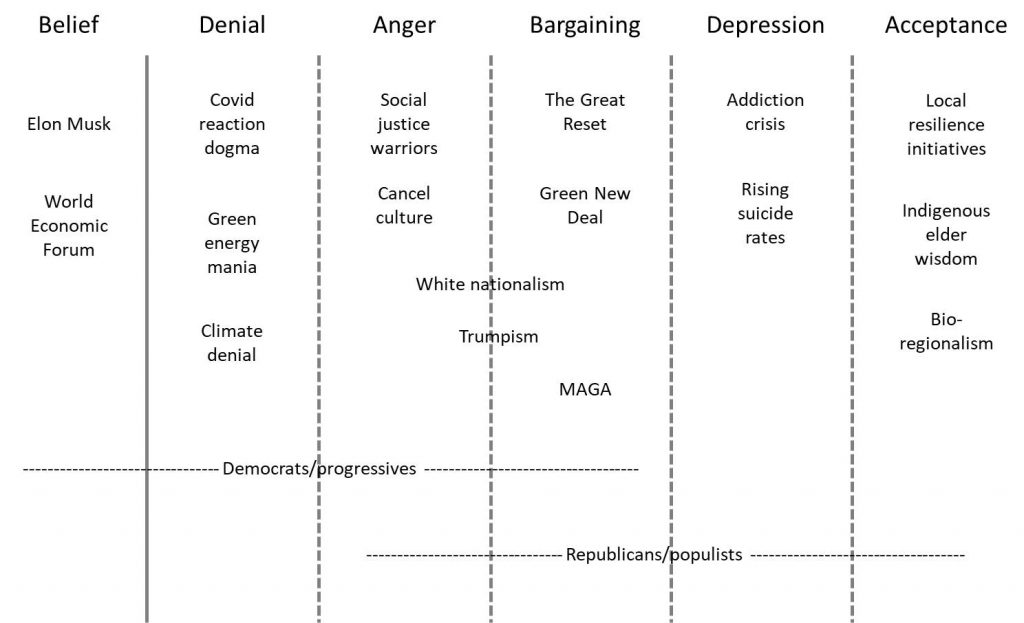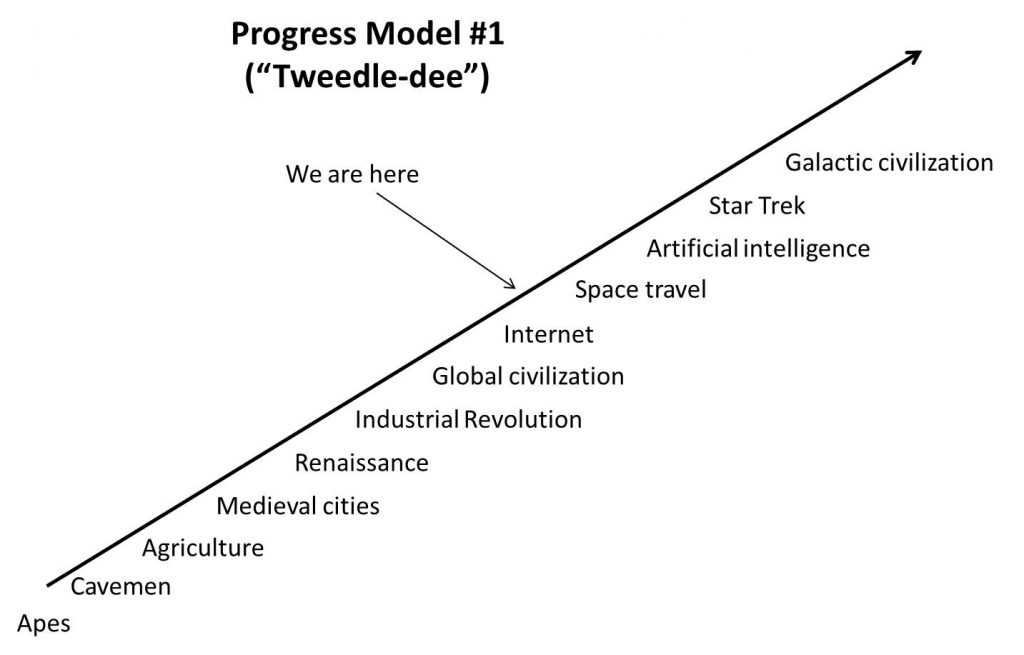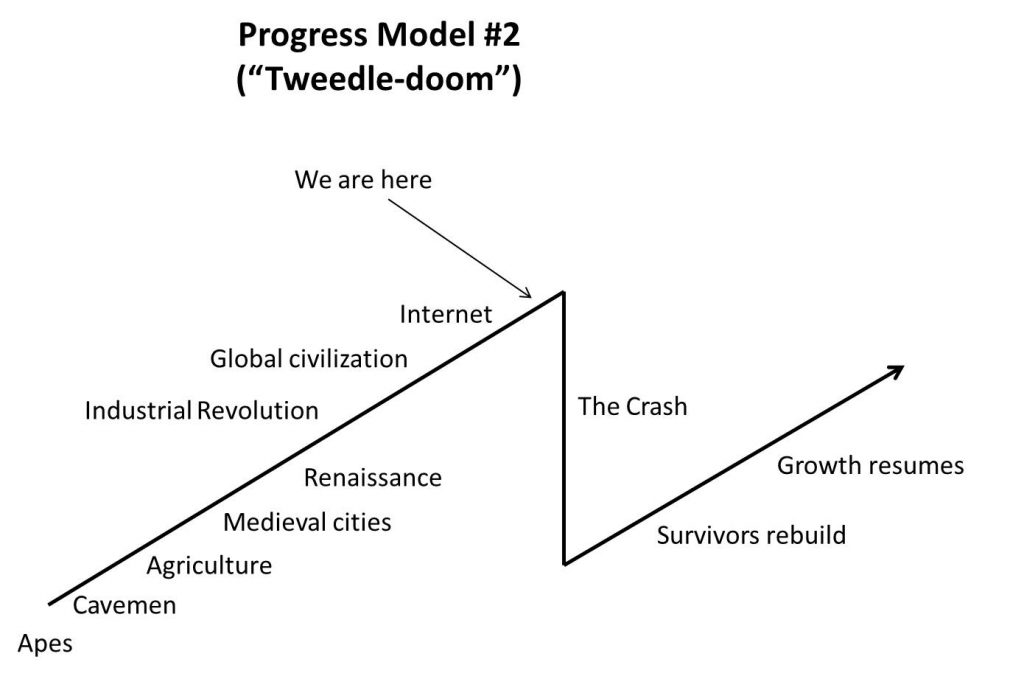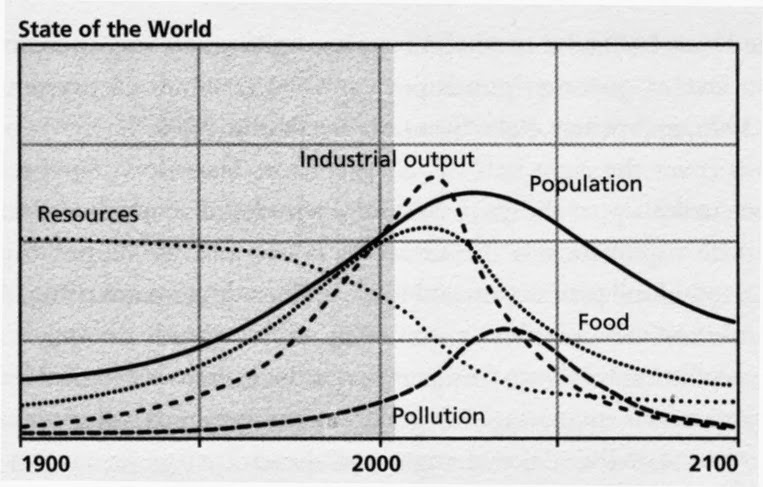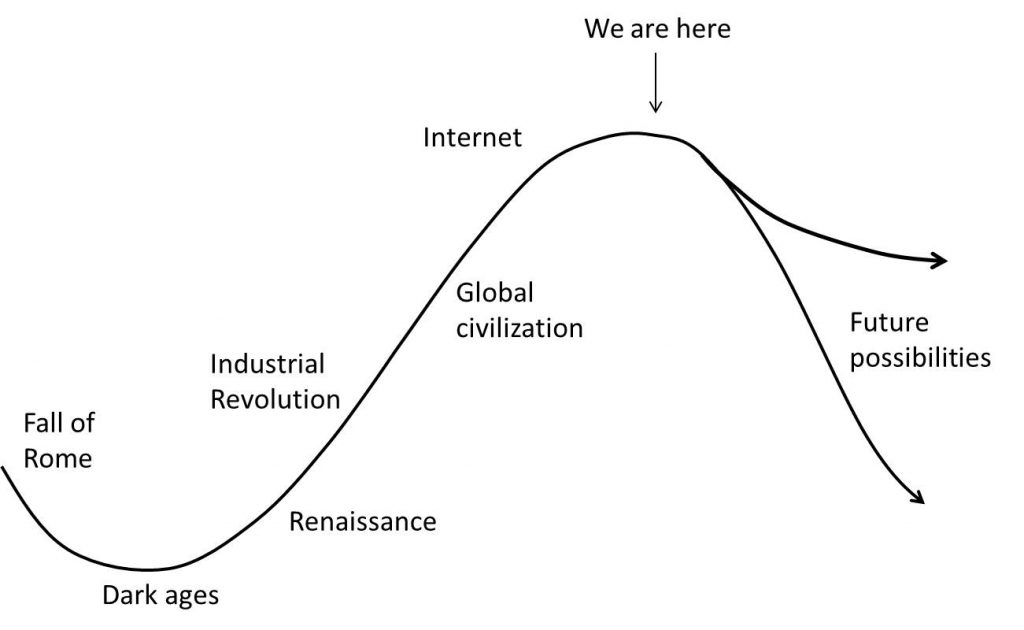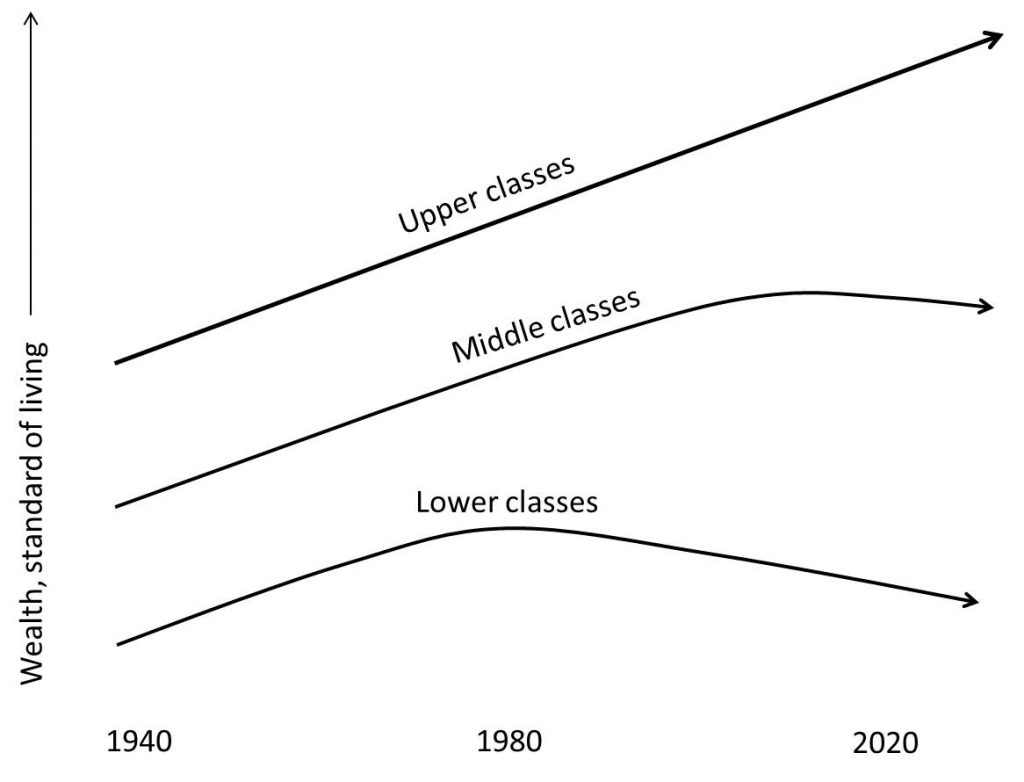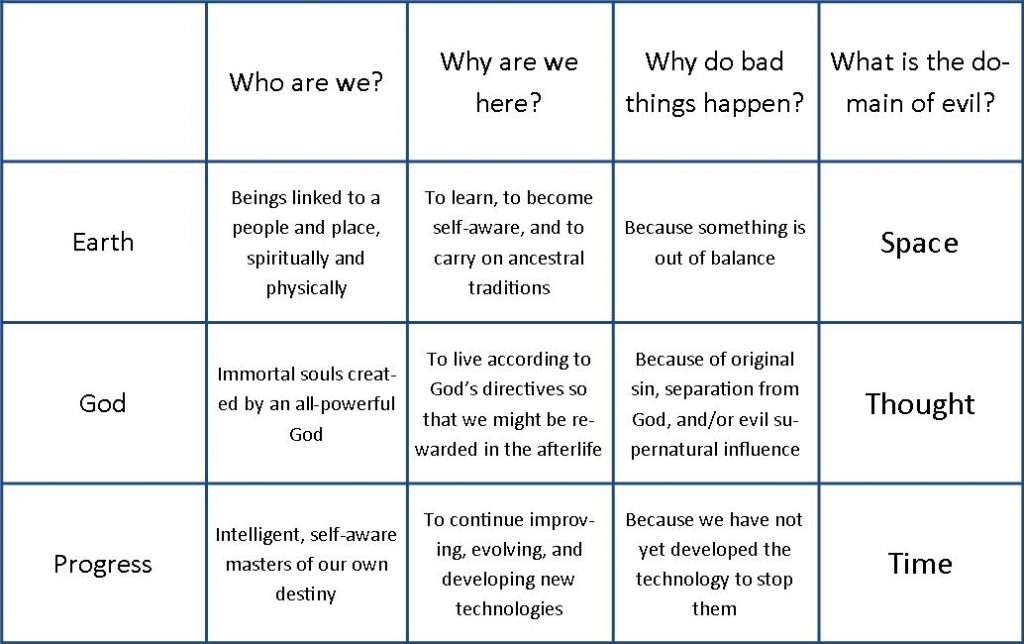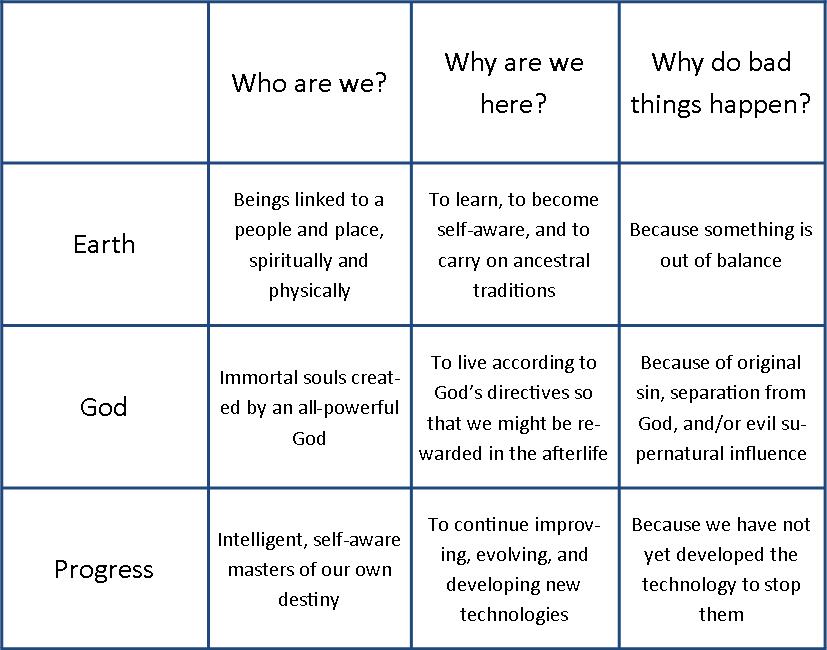A year ago, when the first three Covid-19 vaccines received emergency approval to much collective hope and fanfare, I made a promise to myself that I would wait one year to decide whether to be vaccinated myself, based on the body of evidence of efficacy and short- and long-term safety.
That year has now passed, and I have made my decision: I am going to remain unvaccinated, and I feel like that decision is scientifically justified.
While I expected that vaccination would become a contentious issue, I would never have predicted in late 2020 that governments would be mandating these vaccines a year later, or that the official government and media narrative would become so strident and so devoid of nuance.
I have long lamented the societal tendency – which has been ongoing for at least two decades but which really accelerated following the 2016 election – to divide the world into Good People and Bad People. Good People supported Hillary. Bad People supported Trump. Good People posted black squares on their Instagram pages to signal their support for racial justice. Those who deemed this to be a rather silly and ineffectual means to support racial justice were deemed Bad People. This divisive poison has now even penetrated into the small world of organic seed production. The Good People seek to break down “dominating” constructs, to “decolonize” the seed community, to center and elevate those voices which have been marginalized. There is nothing wrong with this work per se, but it comes with a certain self-righteousness, in which many of the elders of the community – those who have fought to establish a foothold for small organic seed production against the machinations of ruthless global corporations – are called out as part of the problem, as egotists, as Bad People. It refuses to acknowledge our common humanity, our common dedication to the sacredness of seed and of life on this planet.
This has been a difficult year for me; 2021 was the year in which I – thanks to my opposition to the vaccine narrative and my unwillingness to be vaccinated – became a Bad Person. I don’t do well with that. For better or worse, I am one who looks outward for validation and respect, and even in normal times I am socially awkward and I often feel that I am being pre-judged negatively by those who I meet. I am most grateful for the online community that author John Michael Greer has established for open discussion, and also for all of those in my personal community who have maintained respect for me even as their own perspectives hew closer to the mainstream.
I feel grateful to be self-employed in a small town in the United States right now, and not in Chicago, New York City, Canada, Australia, Austria, Germany, or any number of places where basic rights are becoming contingent on vaccination status. Although I am not currently free to leave the country, I am grateful that few of my opportunities have been constrained, and that it seems that further ratcheting of restrictions is unlikely at this point. At the same time, I have to admit that in all likelihood I owe many of those continued freedoms to angry right-wingers with guns, who honestly believe that the drive for vaccination is driven by a malicious globalist agenda for social control. I do not agree with the opposite pole on most issues, but I guess if I am going to survive in a polarized society it is helpful to live in a place where both of the poles – however dogmatic and misguided their beliefs may be – hold some degree of influence. I have to hope, though, that this progressive increase in polarization will begin to give way to renewed communication, to healing, before it gives way instead to armed insurrection and violence.
I should reiterate here what I actually believe is going on, which is most definitely not that we have excellent and safe vaccines available that would end the pandemic if only those stupid and ignorant unvaccinated people would get their shots already. It is also definitely not that Bill Gates and Klaus Schwab and cronies are using vaccination to roll out a worldwide digital identity and social credit system that will create a Matrix-like world in which we are all subservient to the global capitalist Machine. Certainly if the latter were even partially true, vaccine cards would not be cheap and easily forged cardstock, and there would already be some nationwide database of vaccination linked to passports or drivers licenses. Instead, I perceive that the majority of modern humans are believers in Progress – the set of beliefs that includes the mastery of human ingenuity over nature and over the evils of the past, among other things – and that vaccination is a core sacrament within that belief system. It is simply assumed, in the face of a global pandemic, that a vaccine will be developed and will put an end to suffering and death, and any who would question that assertion are backwards heretics who must be discredited and silenced.
In my quest to better understand the science of Covid-19 and vaccination, I have now read well over a hundred scientific publications, and I continue to monitor the latest research that appears on preprint servers each week. I feel like I have a solid understanding of where the science stands, which I will attempt to present here. I’m not going to fill this with citations and footnotes – in part because I am presenting an overall mindset shaped by reading multiple studies – but I can provide additional references upon request to back up any particular claim.
Are the vaccines safe?
No.
Most of the time when people hear this question they mentally convert it to “Are the vaccines safer than infection by a virus that has claimed 800,000 American lives?” which is a very different question which I will address below, but “safe” ought to imply actually safe. Boarding a plane is safe, in that it does not meaningfully increase one’s chance of death as opposed to staying at home. By the same metric, driving cross-country is significantly less safe, although still safe enough that few people hesitate on that basis alone.
This graph tells the story:

Contrary to frequent debunking attempts, these are not meaningless data. Submitting to VAERS takes about a half hour and requires the submitting doctor or patient to affirm under penalty of perjury that they have solid reason to believe the death or other adverse event was caused by a vaccine.
We can argue about to what degree these deaths might be under-reported or over-reported, but even if the tally is off by a factor of ten in either direction, the take-home message remains the same: these are the most dangerous vaccines in modern history, and they carry a real risk of death and other life-altering adverse effects. This is affirmed by the existence of survivors’ movements like Real Not Rare, which seek to draw medical and political attention to the very real experiences of harm and loss that a growing number of people have experienced following vaccination.
Occasionally I still see the argument that it is OK to lie about safety because the net benefit of mass vaccination would exceed the net harm. I no longer believe that that cost-benefit ratio of mass vaccination favors the vaccines, but even if this were true I cannot stand behind any argument that says it’s OK to lie “for the greater good.” This is not “just a little poke”. It carries very real risks along with real benefits, and the decision to be vaccinated should be a carefully considered one – along the lines of prophylactic surgery to offset a high genetic risk of cancer.
Is vaccination safer than infection?
It depends.
The risk stratification of Covid-19 infection is immense, with elders with comorbities around 1,000 times more likely to die if infected compared with healthy children and young adults. At least in the near term, vaccination of high-risk groups clearly carries a lower risk to life and limb than infection. However – and especially given that the risk of some adverse effects is higher in the young – the opposite is quite clearly true for children and healthy young adults.
One of the most morbidly befuddling aspects of the past year has been watching what could have been a heroic victory of modern medicine – releasing a vaccine that reduces the risk of death by 75-95% in vulnerable elders – turn into a tragedy as we increasingly marketed, coerced, and even mandated these same beta-version products to everyone regardless of pre-existing risk or natural recovered immunity. Rather than acknowledging that the first vaccines to market are likely to be less-than-ideal and continuing development of safer vaccines with more rigorous testing, we have committed ourselves to the same options and many countries have already ordered enough doses to provide their citizens with four or more injections. Whether or not one is in favor of mass vaccination, this failure at the cost of human life should be unforgivable.
Do the vaccines reduce transmission?
Not by much, and perhaps not at all since Omicron arrived.
We have known for months that vaccinated people, when infected, carry identical viral loads to unvaccinated people, and that the virus can readily spread through fully-vaccinated schools, hospitals, and workplaces. Thus the primary basis for vaccine passports and mandates has been very weak, and in venues that require a negative test only for unvaccinated people, it will actually be the vaccinated people who are more likely to bring in and spread the virus.
We have also known, based on population-level data, that there is no significant inverse correlation between the proportion of the population vaccinated and the number of reported Covid-19 cases, which further suggests that vaccines do not meaningfully reduce transmission.
With Omicron, the vaccinated proportion of infections has been equal to – or in some cases even greater than – the proportion of vaccinated people in the population. Boosters might help for a few weeks to a few months, but it is high time that we let go of the idea that vaccines reduce transmission.
Was it ever reasonable to assume that vaccination would drive the virus to extinction?
No.
The closest analog we have to SARS-CoV2 is not smallpox or polio but another respiratory retrovirus: influenza. Flu vaccines reduce infection rates and disease severity to various degrees, but they do not prevent infection altogether (because the type of antibodies generated by the vaccine have a limited presence in the respiratory tract), and the virus mutates continuously to get around them. The current outcome, with transmission continuing despite vaccination and increasing levels of vaccine resistance in new variants, was always the most likely one.
Do Covid-19 vaccines reduce hospitalization and death from Covid-19?
Yes.
Although plenty of people on the opposition side try hard to pretend this isn’t true, the signal is quite clear in the data. The effect is also quite durable, with vaccine-induced protection against infection fading after a few months while protection against severe infection remains. This is likely due to priming of T-cell immunity, and similar protection against severe infection is observed following recovery.
This remains a strong argument in favor of vaccination for high-risk groups, and the idea that increasing vaccination rates will reduce strain on hospitals is also worthy of consideration. However, as conventionally presented without nuance, the argument fails to note that those with natural immunity will receive a much more limited (if any) benefit from vaccination, and for some groups (especially young men) there is growing evidence that vaccination actually causes more hospitalizations (due to myocarditis and other adverse reactions) than it prevents.
Are long-term effects still a concern?
Yes.
Until a full two years have passed – and possibly up to five – we cannot rule out the possibility of Antibody-Dependent Enhancement – a situation in which vaccine-induced antibodies lead to enhanced, more severe infection by a future variant of the virus.
There is also a possibility that spike protein exposure or immune dysregulation as a result of vaccination could lead to shortened lifespans or increased occurrence of illnesses or medical conditions. Of course the same is true for infection; some people experience long covid, and the rate of cardiovascular and neurological problems appears to be elevated for some time after recovery. So this is a trade-off with unknowns on both sides.
Are continuing boosters safe?
We have no idea, but I’m betting on “no”.
There is certainly no reason to believe that they will be safer than the original injections, which we already know are more dangerous than any other vaccine in common use. And given that protection against severe illness and death following vaccination remains robust beyond six months, and an ever-increasing number of people have experienced breakthrough infections which act as a natural “booster” and confer strong immunity, it would seem that the cost-benefit ratio looks worse for the boosters than for the primary series.
One thing to keep in mind here is that these are genetic vaccines – an entirely different technology than the conventional vaccines which inject antigens directly – and we have effectively no studies regarding the short- or long-term safety of injecting them three, four, five, or more times.
Genetic vaccines provide instructions for human cells to produce viral proteins, which then generate an immune response. This immune response unavoidably targets human cells, which could easily interfere with the delicate balance between autoimmunity (a failure state in which the immune system attacks its own tissues) and tolerance (a failure state in which the immune system recognizes pathogens or cancer cells as its own tissues and fails to attack them). Repeating this process multiple times per year strikes me as a dangerous idea, made more so by the fact that we have almost no prior data and we are conducting this experiment in real time on millions or perhaps billions of people.
Furthermore, we now know that the spike protein is itself biotoxic, directly causing blood clotting and possibly also amyloid formation. Repeated internal exposure to this protein through continuing boosters could lead to cumulative harm.
Is natural immunity equal to vaccination?
Yes.
Although some studies have found that hybrid immunity (infection AND vaccination) is superior, it remains true that the protection against infection and severe disease provided by previous infection is comparable to, and in some cases superior to, that provided by vaccination. There is no solid justification for requiring or even recommending vaccination for those who have already recovered from Covid-19.
What does the future hold?
Covid-19 will become endemic in the human population, and in a number of animal populations as well. It will likely follow a similar path as coronavirus OC43, which is thought to have entered the human population from cattle in 1890 and to have caused waves of illness and death – with symptoms quite similar to Covid-19 including loss of smell – of decreasing severity over 5-10 years before it faded into the background to become just another seasonal cold virus that is still with us today.
All of us will get infected at some point, or our immune system will be trained to recognize the virus by subclinical infection such that we acquire immunity without detectable antibodies. Vaccination could easily help to reduce the death toll, but applied as a sledgehammer instead of a scalpel it could also greatly increase the death toll – through adverse effects of the vaccines or by driving viral evolution in an unnatural way that selects for increased virulence.
At the moment we are still very much in sledgehammer mode, and for that reason I am increasingly concerned that the net effect of our vaccination campaign on human life will be negative, and perhaps dramatically so.
Into a new year we go. I hope the news at the end of 2022 is more positive, and that we can begin to step back from the polarization, “othering”, and dehumanization that has been accelerating in recent years and that represents an existential threat to our society.

